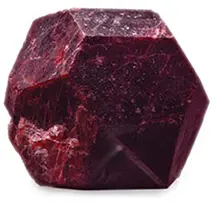
Exploring the Origins
Garnet encompasses a group of minerals with varied colors like deep violet-red, green, pink, orange, and black. This relatively hard stone (6.5–7.5 on the Mohs scale) is found worldwide. The name ‘garnet’ likely derives from the Latin ‘granatum’, referring to the pomegranate’s red seeds.
Historical Significance and Lore
Garnets have been valued since ancient times. Egyptian pharaohs adorned themselves with red garnet necklaces, both in life and in death. The Romans used carved garnet signet rings for wax seals on documents. Garnet is also famed for being the light source on Noah’s ark.
Healing Properties
Garnet is renowned for its regenerative healing properties. It purifies and energizes the blood, heart, and lungs, and aids in nutrient absorption. Specific varieties of garnet, such as almandine and grossularite, offer targeted benefits like enhancing fertility and absorbing iron.
Magical Uses
Garnet connects with the pituitary gland and the third-eye chakra. Hessonite garnet, placed on the third eye, can aid in past-life recall. Melanite, worn around the neck, unblocks heart and throat chakras. Spessartite under the pillow can prevent nightmares.
Feng Shui Applications
In Feng Shui, garnet revitalizes and balances energy. It’s used in the northwestern area for safe travel and the southwestern area for partnership harmony. In Feng Shui, it is recommended to use garnet in pairs, particularly for partnership matters.
Personal and Spiritual Growth
As January’s birthstone, garnet enhances survival instincts, making it beneficial during crises. Varieties like andradite and hessonite promote creativity, self-respect, and dissolve feelings of isolation. Pyrope and rhodolite garnets bring stability, vitality, and foster introspection and inspiration.
